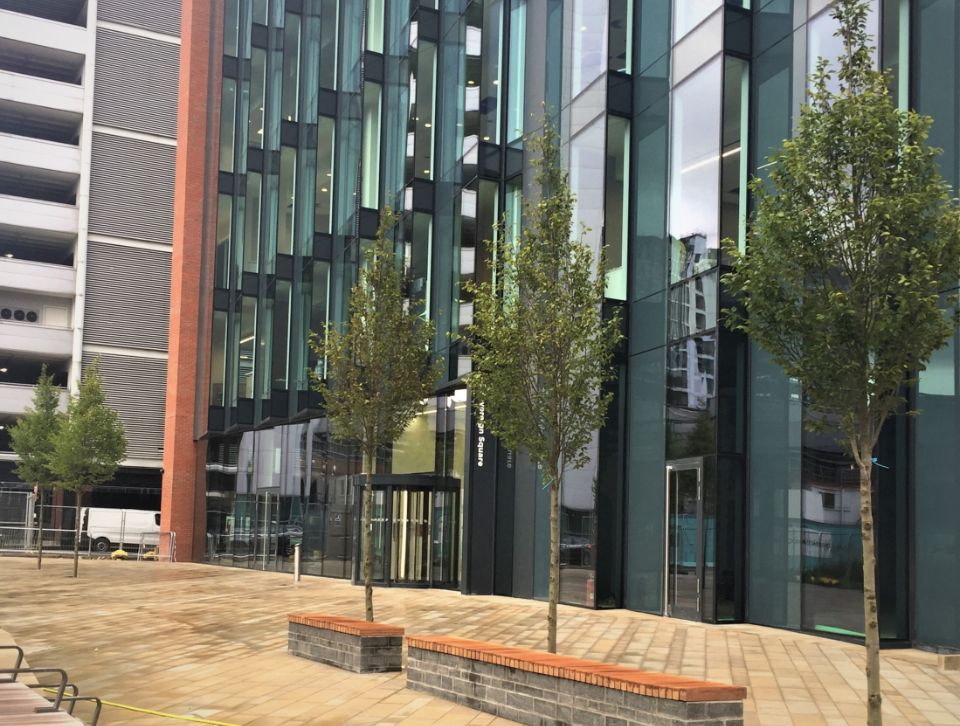Silva Cells enhance the natural environment below by supporting the hardscapes above. The system serves as a dual-purpose green infrastructure tool, providing soil-volume and stormwater-treatment benefits to projects of all varieties, from courtyards and parking lots to streetscapes and on-structure applications.
Our library of case studies illustrate the Silva Cells’ adaptability in nearly any urban environment — whatever your project needs, chances are we’ve seen it. Click on a thumbnail below to read details and see images of our installations around the world. Check back regularly, as we’re always updating and creating new case studies!
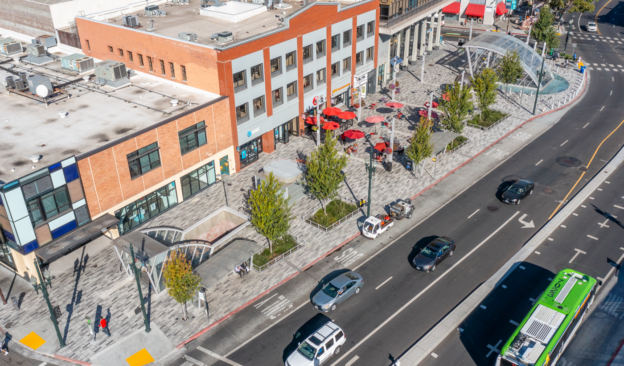
The new above-structure plaza at the Downtown BART station in Berkeley, California, planted 8 trees in Silva Cells — creating an inviting green ambiance in the new mixed-use space
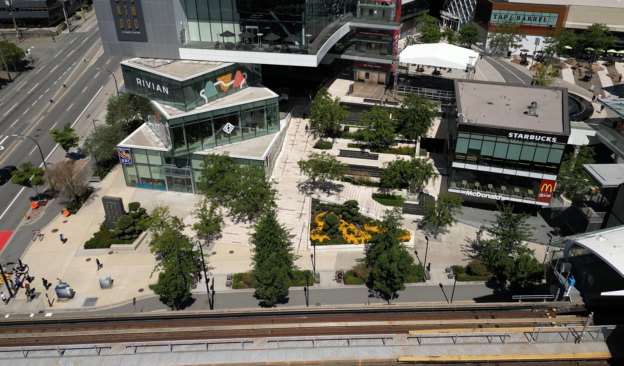
The Brentwood Mall just outside Vancouver underwent a transformation beginning in 2014, evolving from a traditional shopping mall to a multi-use development complete with a robust urban forest of more than 150 trees planted in Silva Cells
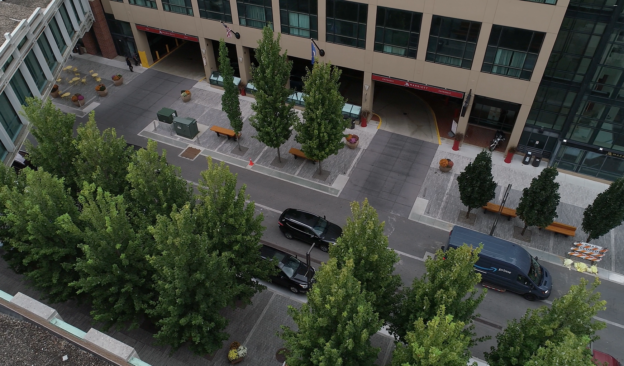
Multi-phase, award-winning project to revitalize downtown core of Rochester, Minnesota, outside the world-renowned Mayo Clinic embraces Silva Cell technology: over a hundred trees are thriving, the public realm space is rejuvenated, and stormwater is being utilized for supplemental tree irrigation
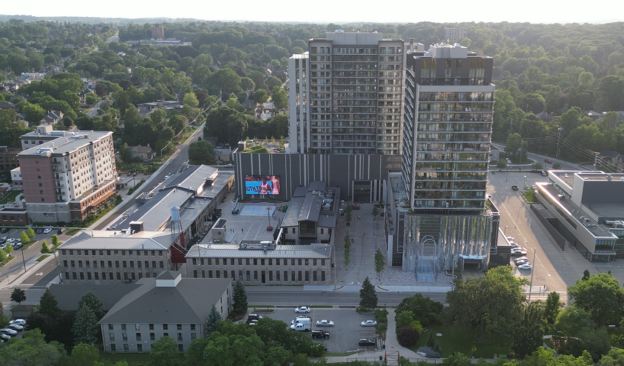
Industrial redevelopment in Cambridge, Ontario, blends old with new and includes a green space corridor supported by Silva Cells
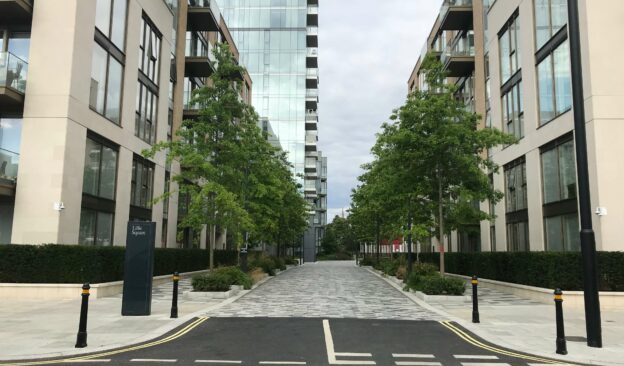
New development area of Earls Court in London known as Lillie Square installed Silva Cells for soil volume and on-site stormwater treatment above the area’s new permeable pavement
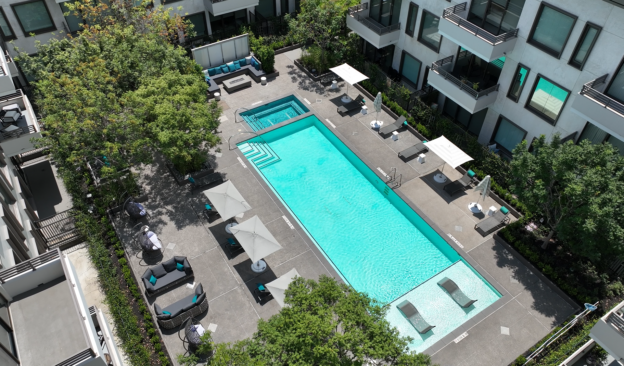
River Oaks, a new high-end development district in Houston, tasked Silva Cells with providing lightly compacted soil to trees around a residential swimming pool and along an outdoor dining terrace.
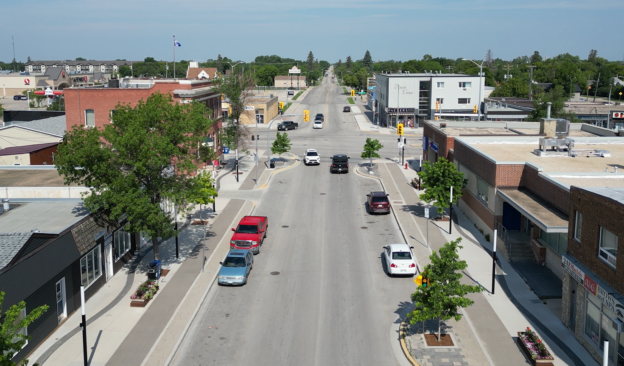
Multi-phase and award-winning streetscape renovations in Selkirk, Manitoba, utilize Silva Cells for soil volume and stormwater treatment
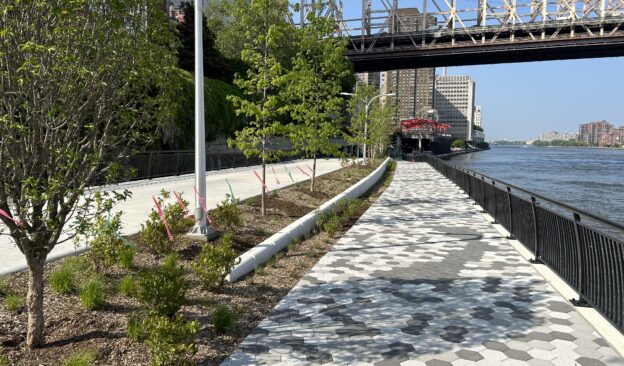
East Midtown Greenway in Manhattan is a waterfront boardwalk utilizing Silva Cells in support of more than 50 trees and to perform LID stormwater treatment before runoff enters the East River
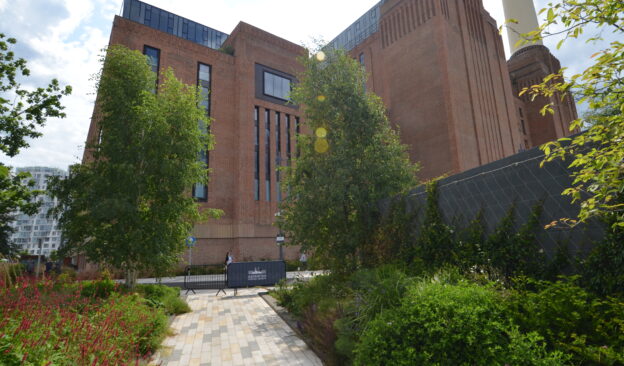
The iconic Battersea Power Station in London, after sitting idle for nearly four decades, was reopened as a new mixed-use development, complete with a “halo” of trees around its facility planted in the DeepRoot Silva Cell system for its uncompacted soil volume benefits
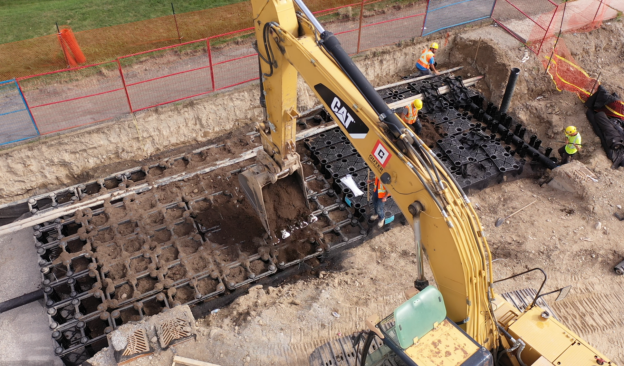
The DeepRoot Silva Cells were installed to provide an ideal soil-volume environment for tree root growth as well as serve as a resilient low-impact development (LID) stormwater-treatment tool on location.
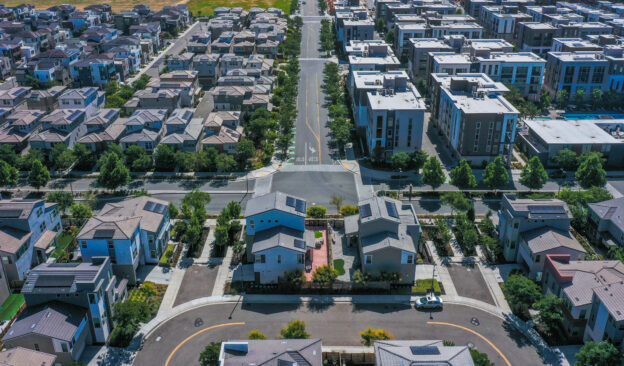
More than 650 trees have been planted in the Boulevard community of Dublin, California, in which 7,000+ Silva Cells are providing soil volume and at-source stormwater control benefits.
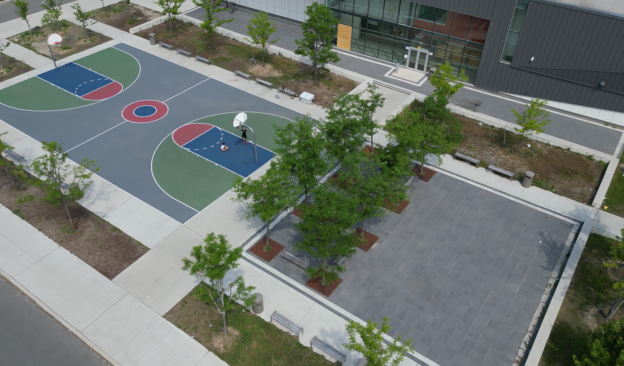
Courtyard trees provide shady area for student and faculty gatherings
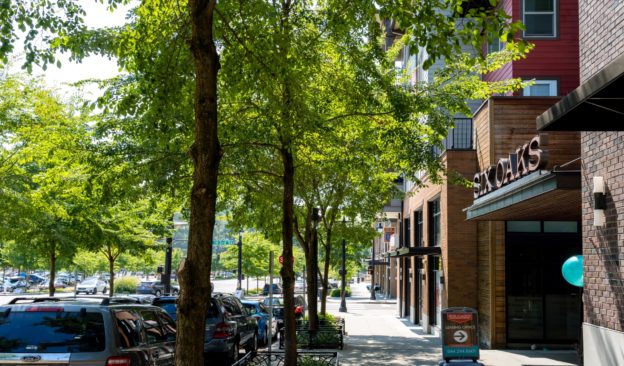
The trees, their support unit (Silva Cells), and the ability to cater to bikes, cars, pedestrians, and outdoor dining are just some of the long-term planning efforts that have made Bothell’s main thoroughfare attractive not just today but for the next 30, 40, and 50 years.
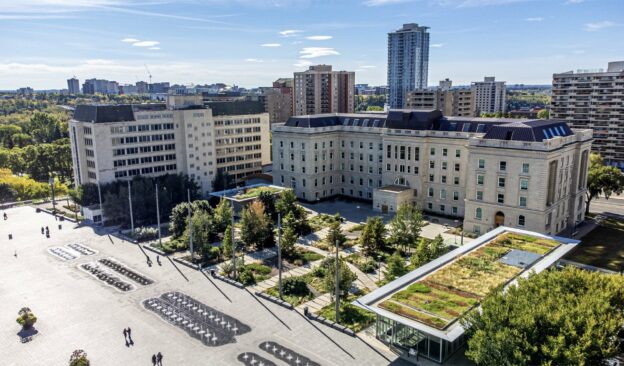
A five-year construction renewal project from 2010–2015 included the installation of 3,000 (2X and 3X) Silva Cells supporting the health of 70 trees.
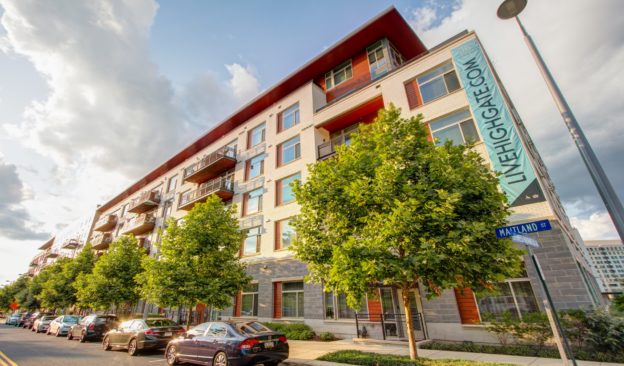
Four years after 252 2X Silva Cells were installed at High Gate at The Mile the trees are big and full enough to provide shade and pedestrian comfort.
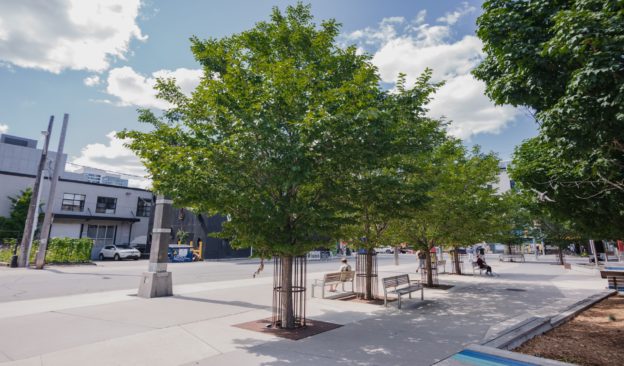
Functioning utilities and healthy tree canopies are possible thanks to the ability of the soil cell systems and utilities to co-exist harmoniously. This is an excellent example of engineers and landscape architects working together to improve the public realm.
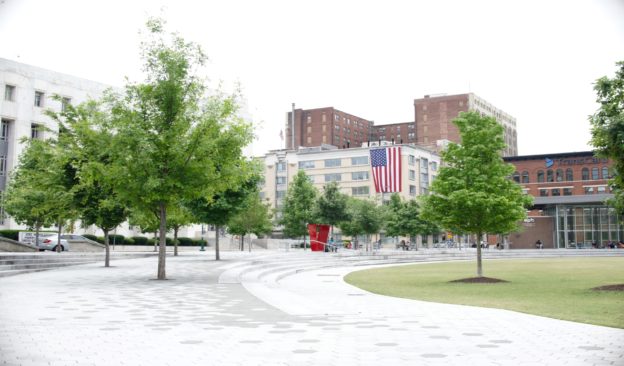
Chattanooga’s downtown was strengthened with green infrastructure in 2017 when 37 trees were planted as part of a renovated, 2-acre urban area redesign project.
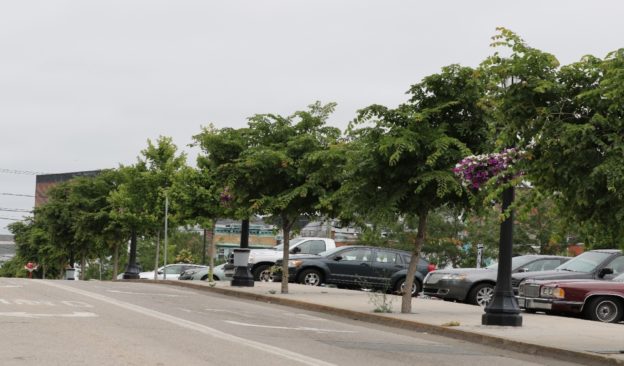
The trees along Eugene O’Neil and Green Street guide commuters and downtown visitors to from the large parking lot to the city’s fantastic waterfront and business community, serving professionals, boaters and tourists alike.
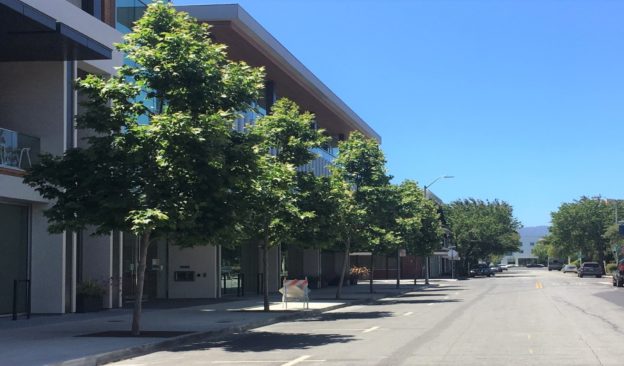
In 2016, a few blocks from the Stanford campus, in Palo Alto’s Evergreen Park district, a new multiuse building was constructed. The project included eight shade trees as part of the streetscape along the sidewalk on Sherman Avenue.

Eye-catching results in an urban park within a children’s playground. 647ft3 (128m3) of soil volume in tree pits support seven trees throughout the past decade in the urban park.
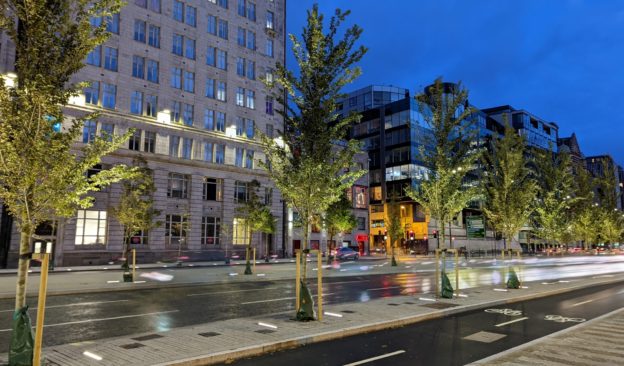
Liverpool’s famous The Strand, which runs past the historic Royal Albert Docks, benefits from a two-part urban renewal project that includes green infrastructure throughout its highly trafficked corridor.
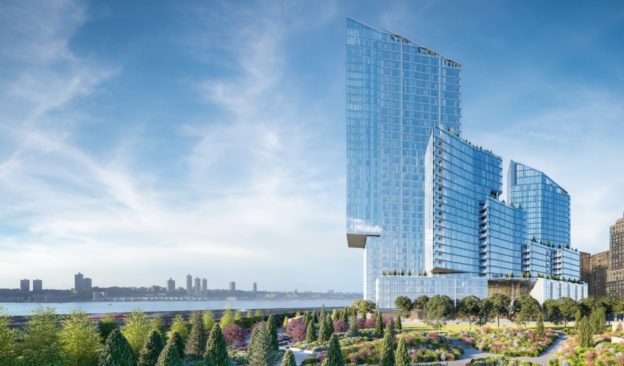
West Side waterfront prioritizes health of 96 trees with 36,000 ft3 of soil fill in a 5 acres of public space, sustaining the health nad urban green space at Waterline Square.
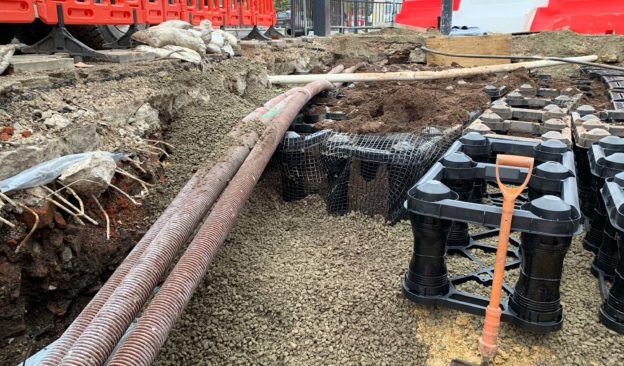
The major transit and metro hub of Leeds City Centre, Headrow Gateway, has been renovated and rejuvenated with green infrastructure and sustainable transportation.
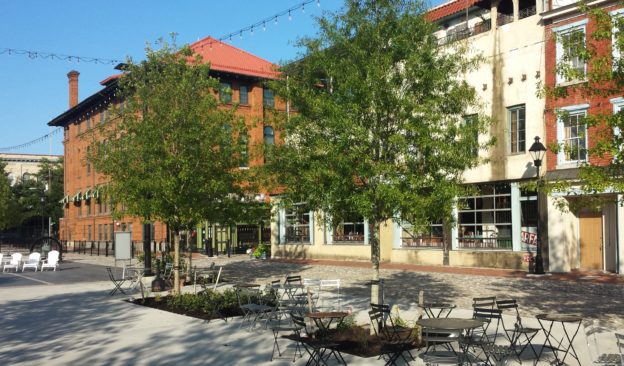
A 240-year-old market glows with resilient green infrastructure and people-centric design
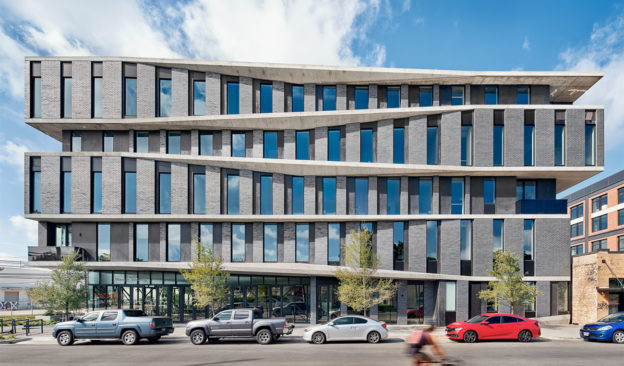
Arrive Hotel preserved its old architecture while enriching its future landscape with healthy trees and onsite stormwater management with Silva Cells.
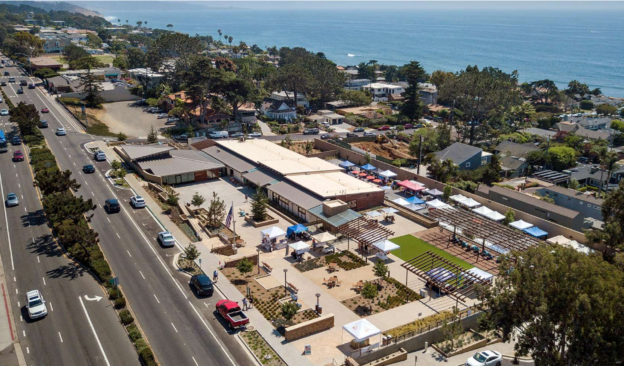
The City of Del Mar Improves its Main Camino with Trees and Silva Cells; an integrated solution to promote stormwater and tree growth.
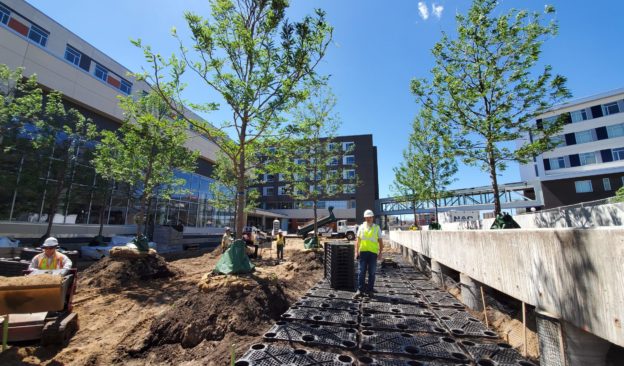
Silva Cell brings unequivocal results, essential support, and B3 requirements to a 5 acre Catholic Charities campus.
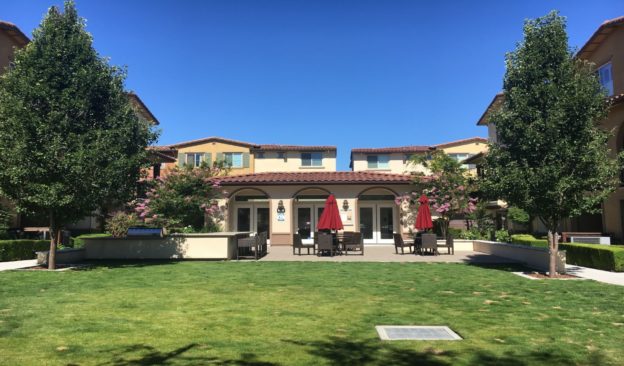
New Home development planted trees and installed Silva Cells to satisfy the regulatory need to adhere to California’s C3 stormwater requirements
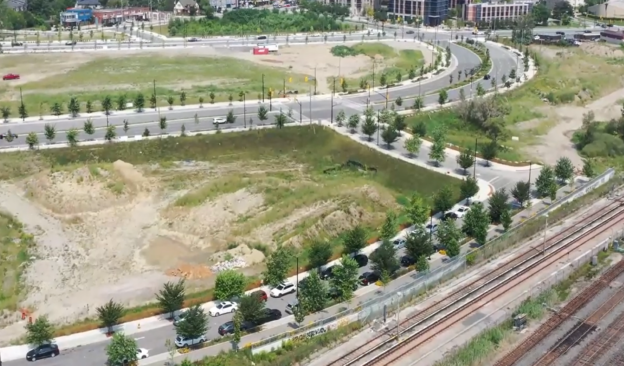
Silva Cells helped the project meet its Green Standard Goals, managing 55% of the stormwater catchment area in a 6.47-hectare site, while ensuring the health of 300 newly planted trees with 30m3 soil volume each.
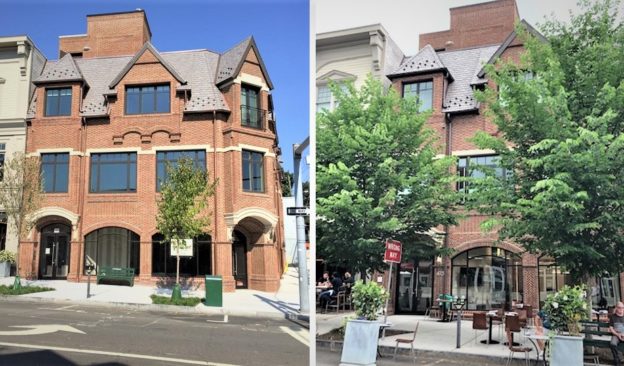
42 Silva Cells, using approximately 1, 050 ft3 (30 m3) of soil, helped to create exponential growth in two Silver Linden (Tilia Tomentosa) trees on Greenwich Avenue.
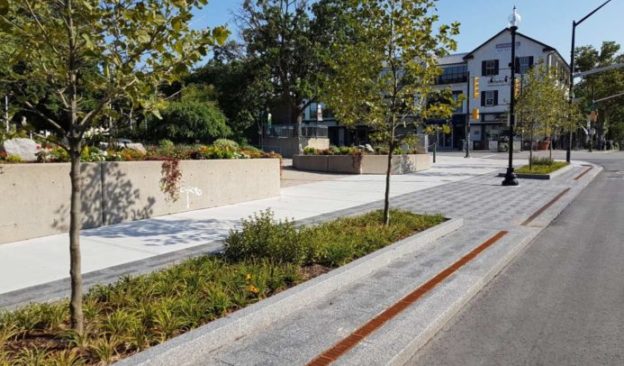
The Lakeshore Road Reconstruction project includes a total of 1,633 DeepRoot Silva Cells, incorporating over 1,758m3 soil volume, 82 trees, a bike path, and an urban art aesthetic.
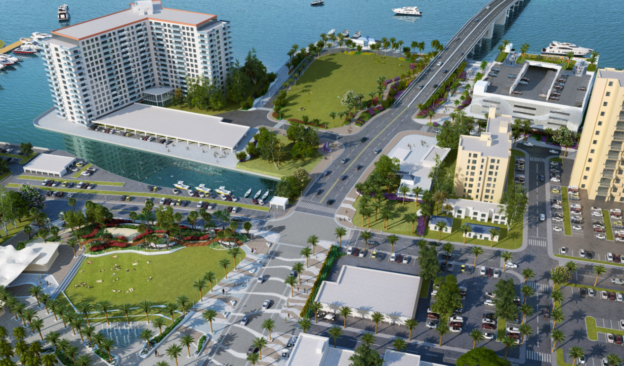
– A $51 million-dollar project that took two years and two phases, incorporated 100 new palm trees into two new public parks with Silva Cells.
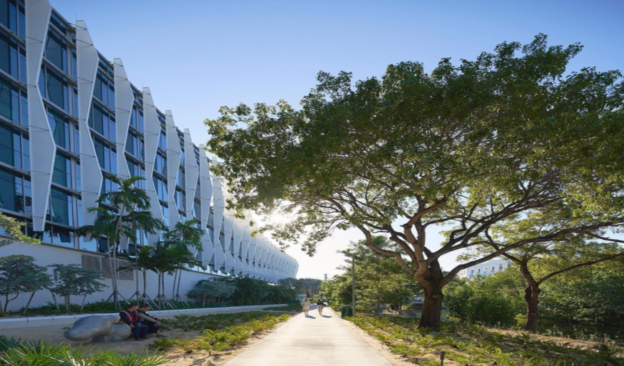
Silva Cell adds lasting legacy supporting sustainable design in a new chapter of the Miami Beach Convention Center
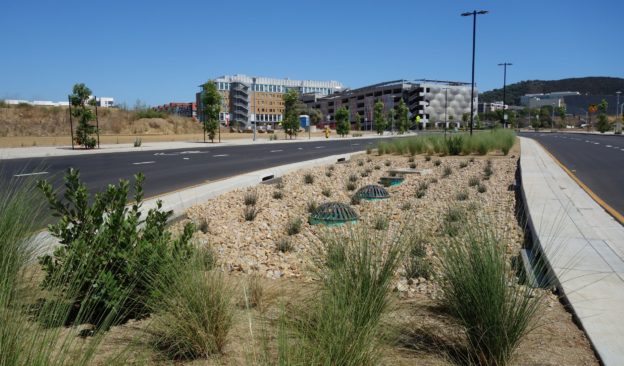
Innovative Storm Water Solutions employed through Silva Cell technology where runoff from the public streets at North City East is treated using median and curbside biofiltration facilities that incorporate underground detention modules for pollutant control, hydromodification, and 100-year peak flow migration.
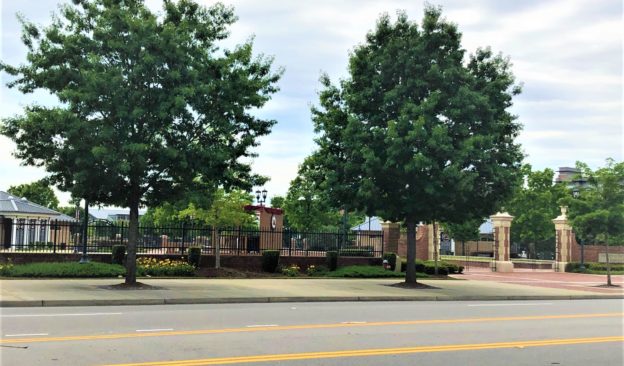
5 ASLA awards and 3 sustainable design elements make the two USC projects green infrastructure champions
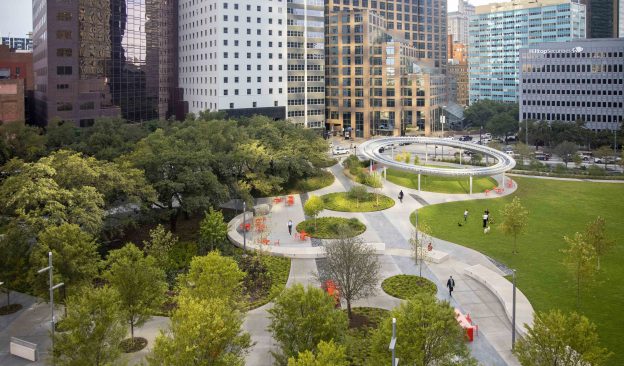
Originally a parking lot transformed into a 3.7-acre slice of green, in downtown Dallas, providing a welcome refuge for shade in urban heat.
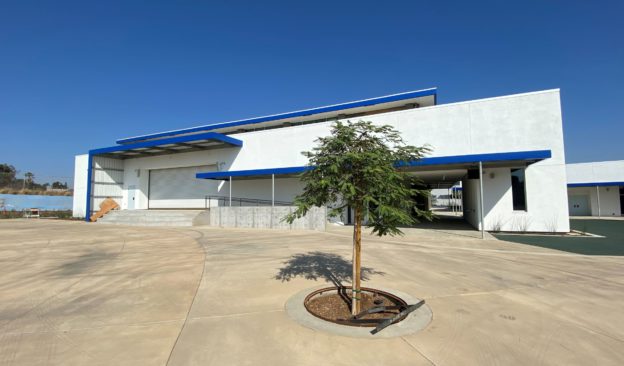
The San Diego Unified School District (SDUSD) is teaching by example, adding Silva Cells to its campuses.
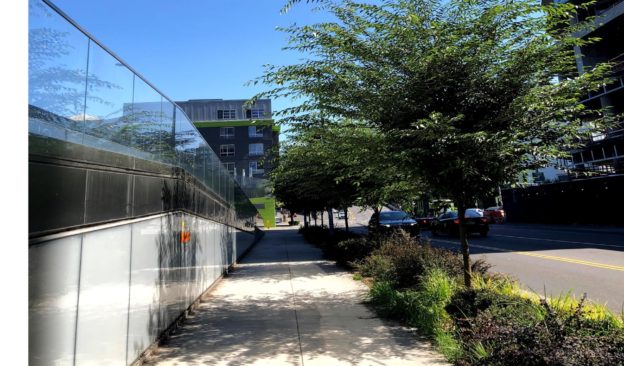
Construction on the Denny Substation was completed in 2018. The uniquely designed substation, named after its host street, Denny Way, in Seattle has unique amenities that provide a vantage point for viewing the city, education and art spaces, and accessible areas for pedestrians and their pooches.
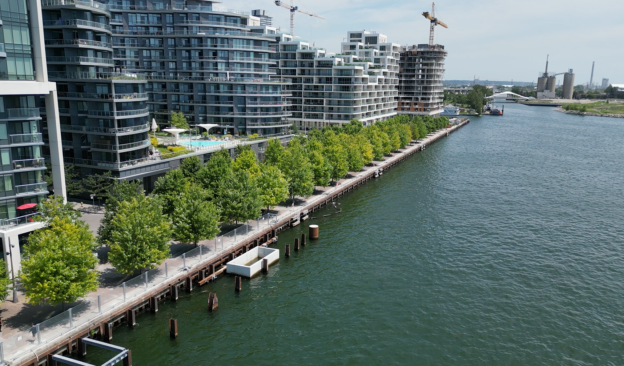
The Waterfront Toronto development consists of multiple green infrastructure projects across Toronto’s waterfront throughout 2010 to today. . This case study highlights four projects where Silva Cells were used to achieve Waterfront Toronto’s green infrastructure objectives.
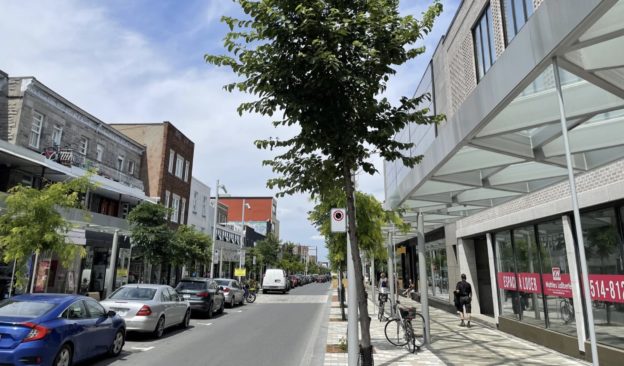
Contractor Eurova was able to use Silva Cell’s shortest option (1X) posts to “step over” existing utilities without breaking up the continuous soil volume trench for the street trees.
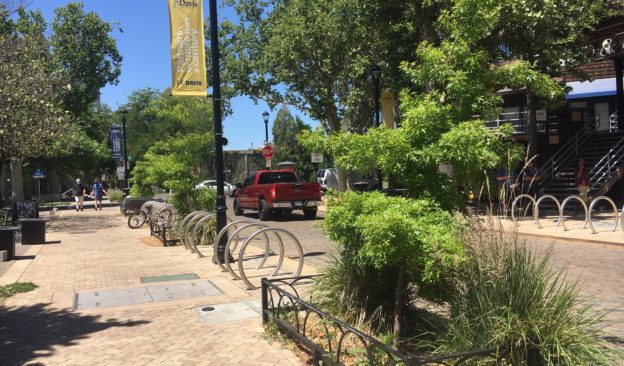
DeepRoot Silva Cells: 138 23 Trees 5,421 Cubic Feet of Soil Volume Awarded Project of the Year (Transportation-Streetscape Category) in 2019 by the Sacramento chapter of the American Public Works Association (APWA), the Davis Third Street Gateway project is a testament to resilience and sustainability. In addition to improving the gateway’s aesthetic appeal with central… More
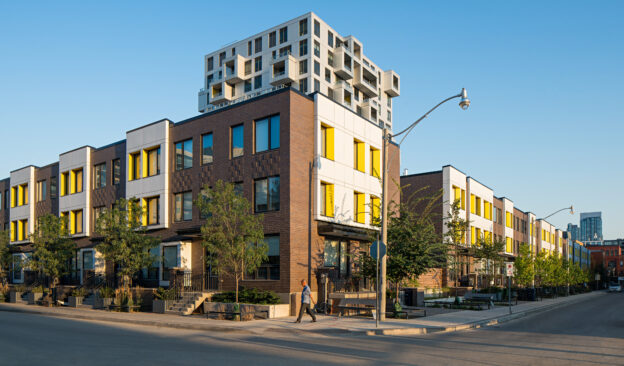
“We hope that this important example of strategic partnerships helps to shift how we think about housing and place-making in our urban communities.” -Janet Rosenberg, Project Landscape Architect Overview The design and installation of trees in the Alexandra Park housing revitalization project in Toronto, Ontario, exemplify the progressive thinking required to solve the often-complex obstacles… More
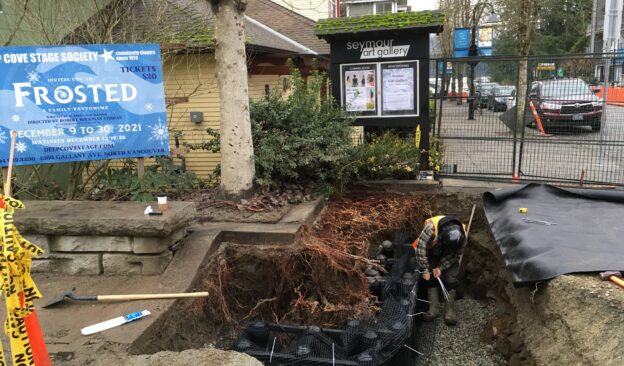
A two-phase upgrade project breaking ground in 2021, the streetscape improvements along Gallant Avenue in the Deep Cove neighborhood of North Vancouver made permanent a temporary outdoor space expansion initiated during the first months of the Covid-19 pandemic. From wider sidewalks to extended restaurant patios, the primary purpose of the renovation was to realign local traffic and utility patterns while also creating a more inviting, pedestrian-friendly outdoor space – complete with a series of newly planted street trees.
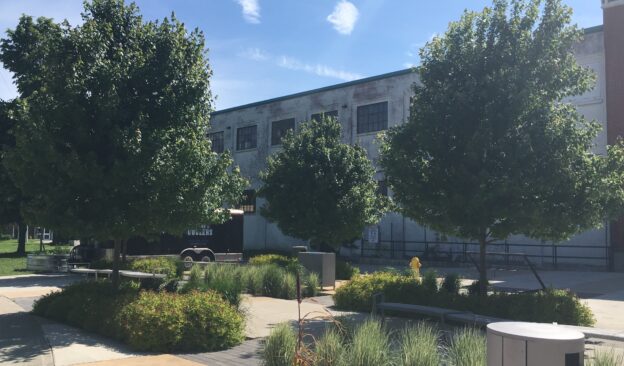
Situated along Dundas Street in the Old East Village neighborhood of London, Ontario, Queens Park underwent an upgrade in the summer of 2016. An expansive terrace was created between the Confederate Building and the park itself — complete with paved walking areas, planting strips, and visitor seating. The design team at Arthur Lierman Landscape Architecture also incorporated green infrastructure into their promenade plans: six new trees.
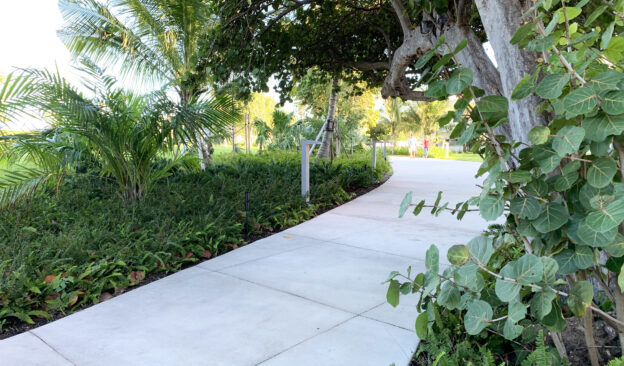
Bequeathed to the city of Miami Beach by the state in 2003, the stunning waterfront parcel of land between 76th and 77th Streets in the North Beach neighborhood began its transformation into a community-oriented, open-concept park called Altos Del Mar in 2014. In addition to the numerous park amenities — including a playground, walkways, retaining/sitting walls, an office/storage building, and irrigated landscaping — the design team at GSLA wanted to plant 14 new trees to complete the welcoming green space ambiance.

The DeepRoot Silva Cells were installed to provide an ideal soil-volume environment for tree root growth as well as serve as a resilient low-impact development (LID) stormwater-treatment tool on location.
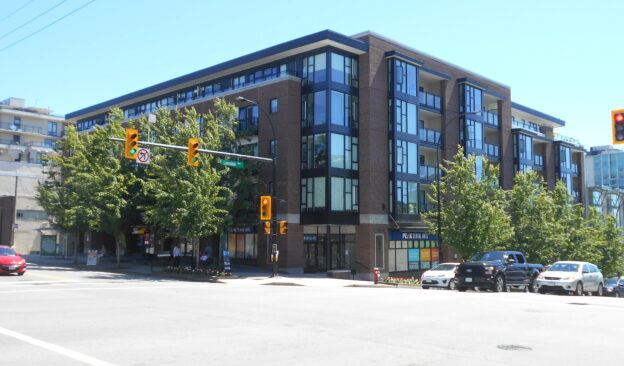
As part of the Versatile Building condominium project in North Vancouver, the corner along 3rd Street and Lonsdale Avenue also received an upgraded sidewalk with ten new trees in 2013. To ensure city requirements for soil volume (10 cubic meters per tree) were met, the design team at Durante Kreuk specified the DeepRoot Silva Cell system; likewise, Vector Engineering led the project’s mandated stormwater detention and treatment element.
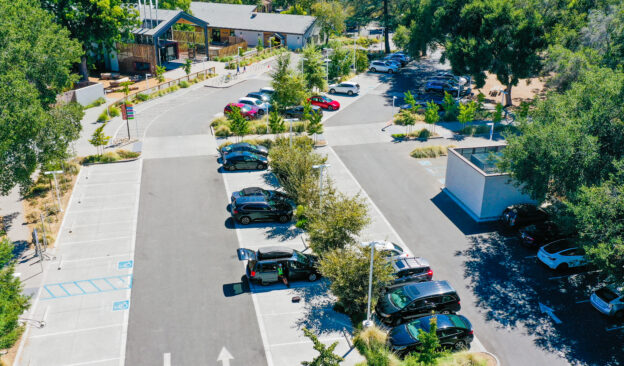
Officially reopened to the public in late 2021, the Palo Alto Junior Museum and Zoo underwent an ambitious $33 million renovation initiative with accessibility, interactivity, and sustainability atop the project’s priority list. In addition to expanding and modernizing the zoo, the parking lot was also upgraded with green infrastructure, including eight new trees to provide visitors with welcoming shade on hot summer days.
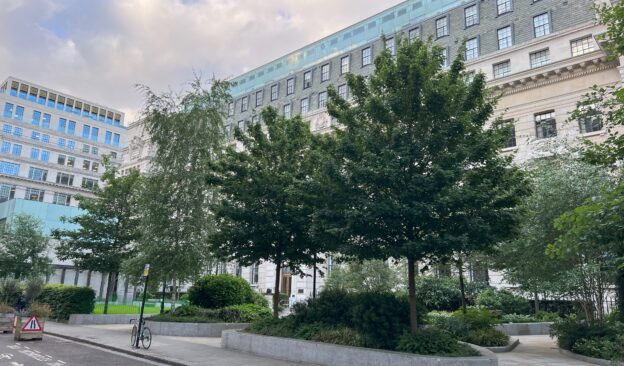
Seething Lane Garden, alongside the iconic 10 Trinity Square building, embraced DeepRoot Silva Cells for soil volume and water drainage benefits Overview Situated just west of 10 Trinity Square — a century-old building adjacent to the Tower of London and the River Thames — Seething Lane Garden is a “pocket park” with a rich history… More
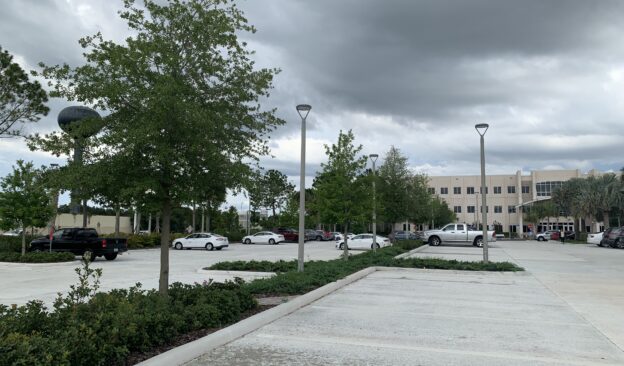
Turkey Lake Plaza installs over 1,800 Silva Cells to provide soil-volume and stormwater-treatment benefits to rest stop parking lot Overview In an effort to increase public safety, decrease maintenance costs, and provide more aesthetically pleasing and functional break locations, the state of Florida has begun work on an ambitious improvement plan to revitalize each stop… More
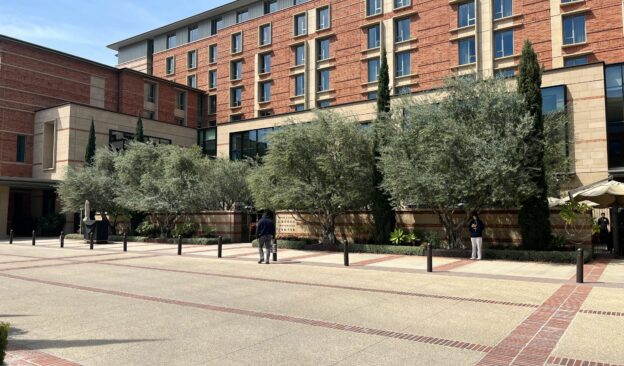
Eight olive trees are flourishing in the Luskin Conference Center plaza, offering students and visitors a welcoming, shady gathering space Overview Officially opening its doors in October 2016, the Luskin Conference Center on the UCLA campus is a beacon of design and sustainability, winning LEED Platinum certification in 2017. An important element of the design… More
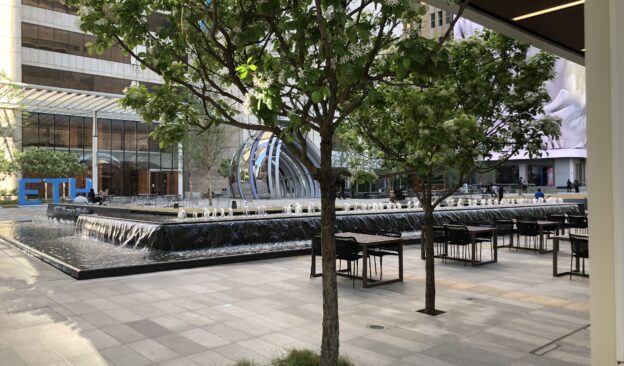
DeepRoot Silva Cells were installed to ensure the trees have access to quality, uncompacted soil volume for robust growth Overview The campus of the AT&T headquarters in downtown Dallas is a sprawling five-block area comprised of five different buildings, each with its own distinctive style and architecture. In an effort to bridge these various structures… More
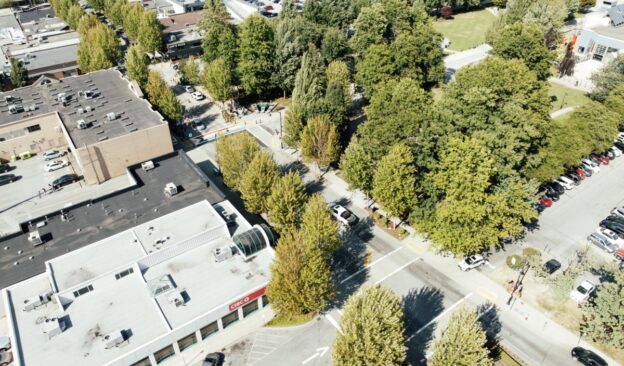
Over a decade-long partnership, DeepRoot and Maple Ridge have created an increasingly green, sustainable city
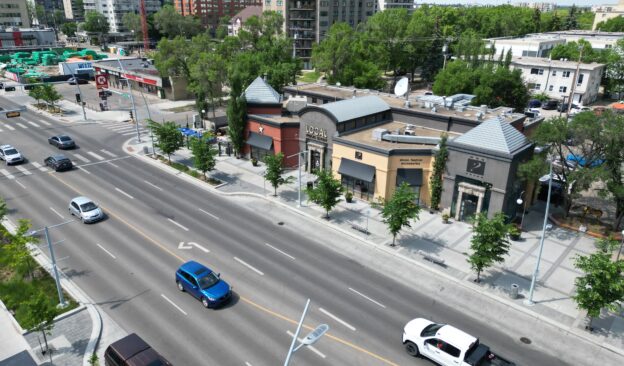
Stormwater and soil volume benefits realized with Silva Cells in Downtown Edmonton
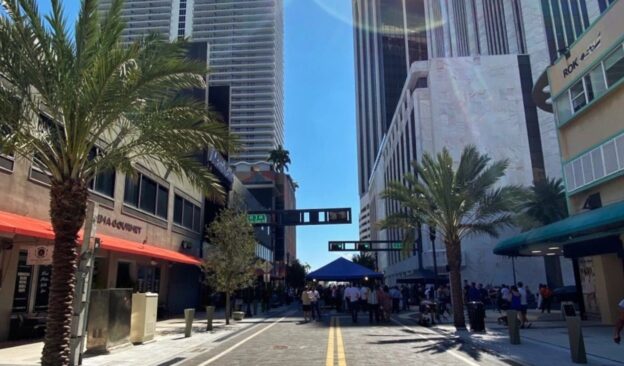
A total of 70 Live Oak trees are providing shady on new “festival” road
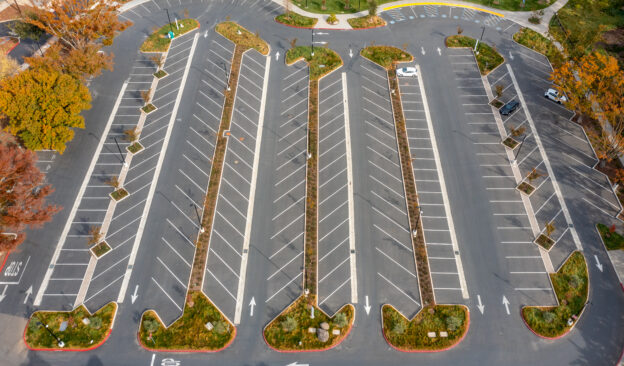
Award-winning renovation includes parking lot trees to reduce heat island effect
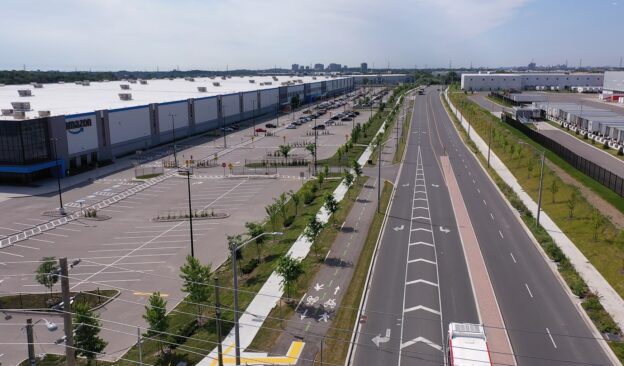
DeepRoot Silva Cells were installed to help nearly 50 new street trees access adequate soil volume, while also offering area stormwater treatment
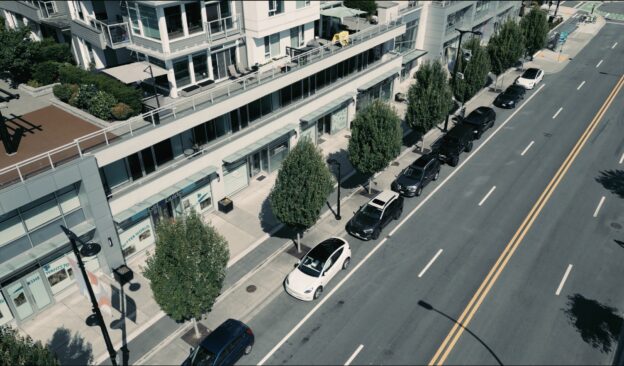
North Vancouver retrofits Esplanade roadway with help from Silva Cells
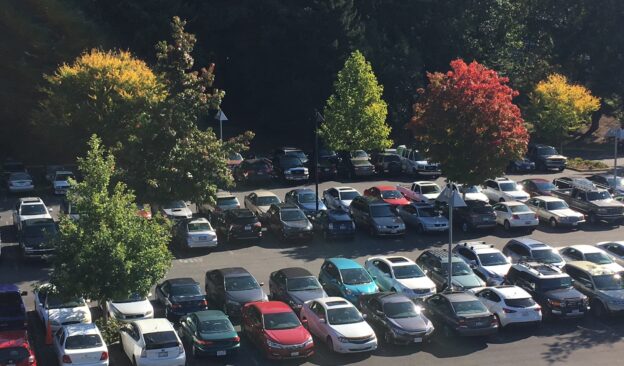
One of the first Silva Cells projects in a parking lot with a stormwater application, proving the versatility of the system
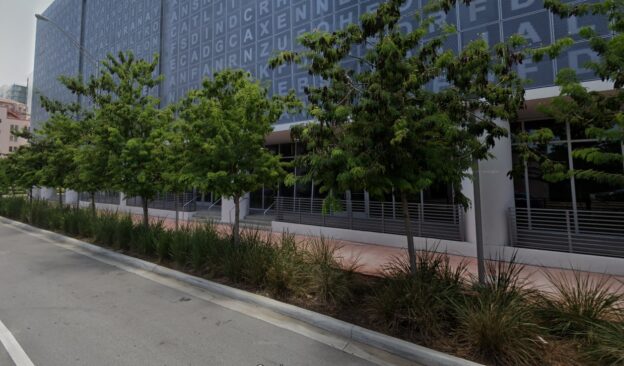
Award-winning garage project in Collins Park neighborhood of Miami Beach frames its streetscape with trees in Silva Cells
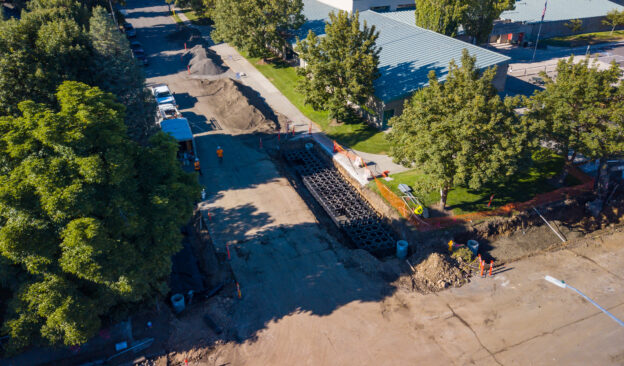
Over 3,000 Silva Cells were installed in West Central neighborhood, providing green on-location stormwater treatment while also supporting more than 60 new trees
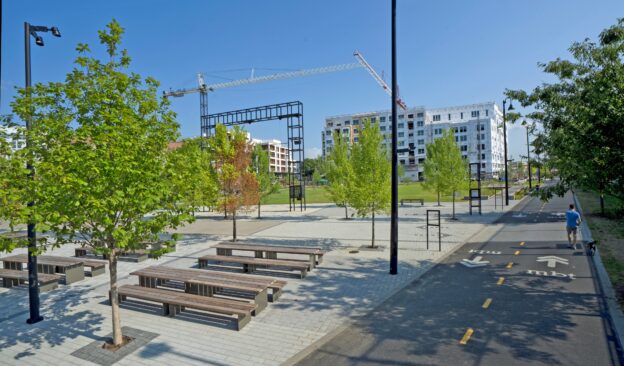
Over 50 trees planted in new community park, providing trees planted in and around hardscapes robust soil volume

Courtyard trees provide shady area for student and faculty gatherings
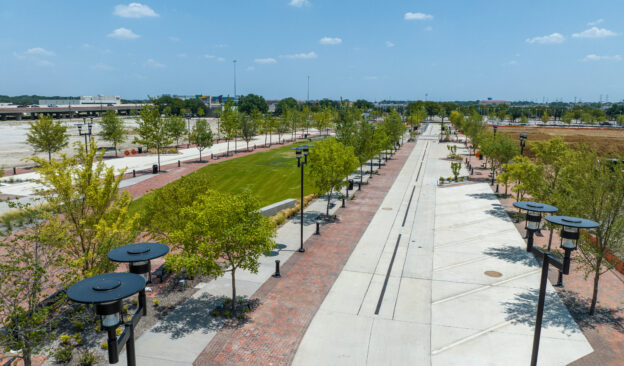
New multi-use development in Dallas Metro includes a central community park, complete with 50 trees planted in Silva Cells
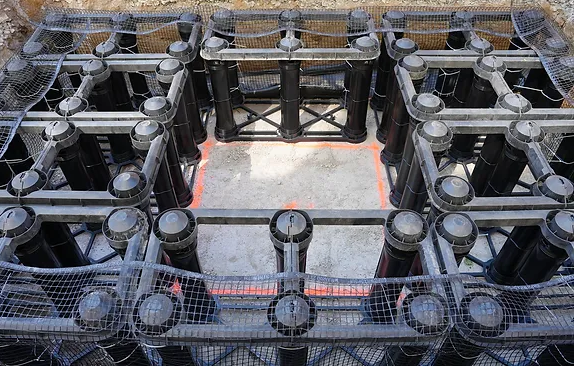
First phase of ambitious $600 million Better Market Street project in Downtown San Francisco includes 32 new trees planted in Silva Cells
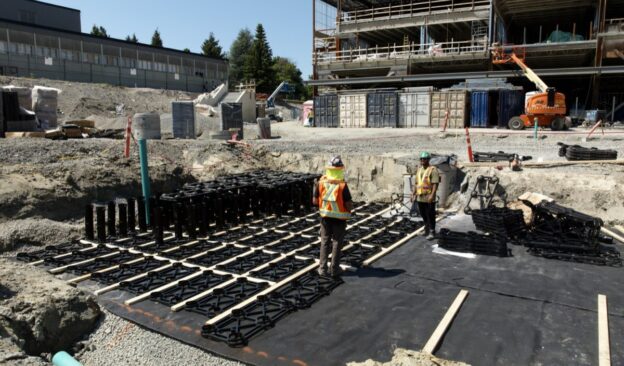
New $79 million secondary school includes 20 shade trees in parking lot, installed in Silva Cells for soil volume and stormwater benefits
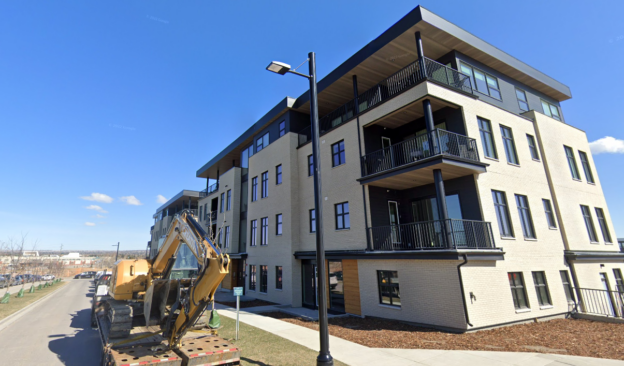
New development in Calgary is building a green courtyard above an underground parking facility
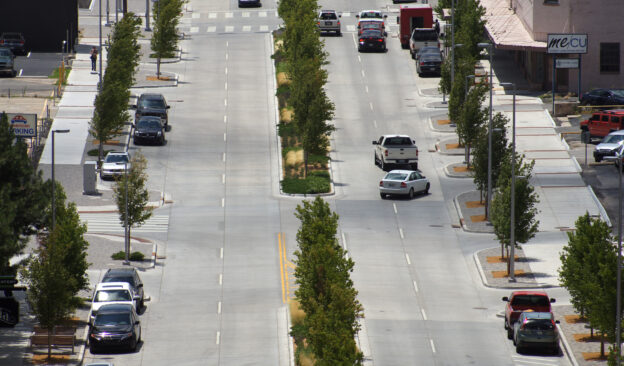
One of the biggest downtown renovation projects ever featured over 2,000 street trees planted in Silva Cells for healthy growth
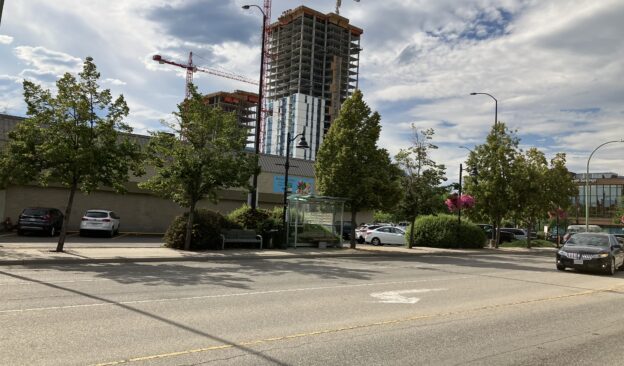
Many lessons were learned from the first successful Silva Cell project, primarily the importance of soil volume in the success or failure of a city tree
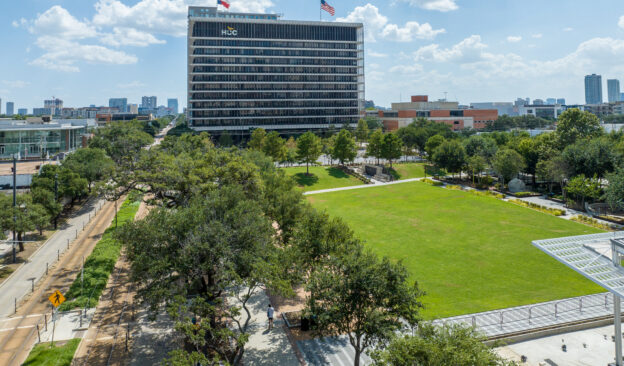
Built above an underground parking garage, Midtown Park in Houston installed Silva Cells for soil volume benefits for its new hardscape trees
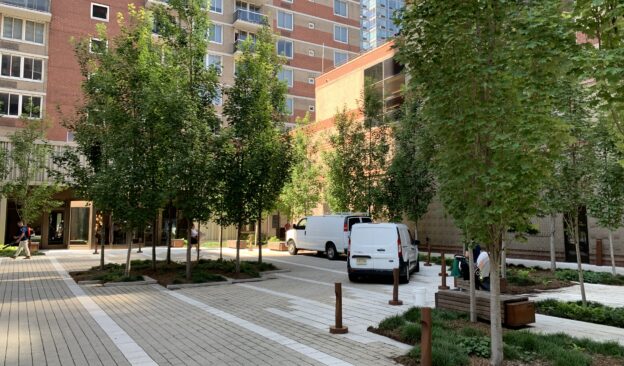
Silva Cells are supporting 36 new entryway trees with uncompacted soil, while also treating stormwater on location and keeping neighboring Hudson River clean

More than 650 trees have been planted in the Boulevard community of Dublin, California, in which 7,000+ Silva Cells are providing soil volume and at-source stormwater control benefits.
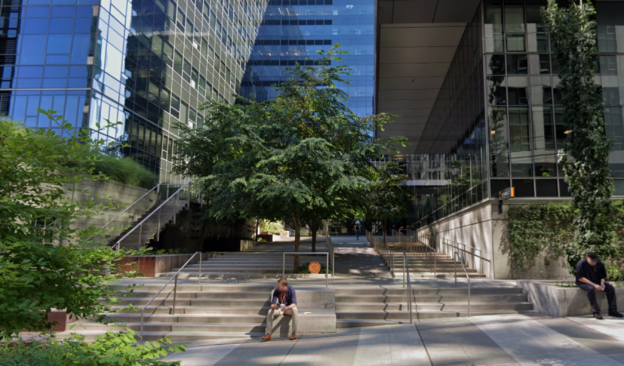
Silva Cells are helping grow trees in new Seattle high-rise courtyard, built above an underground parking structure on both the flat-surface plaza and the stairs leading to the building entryway.
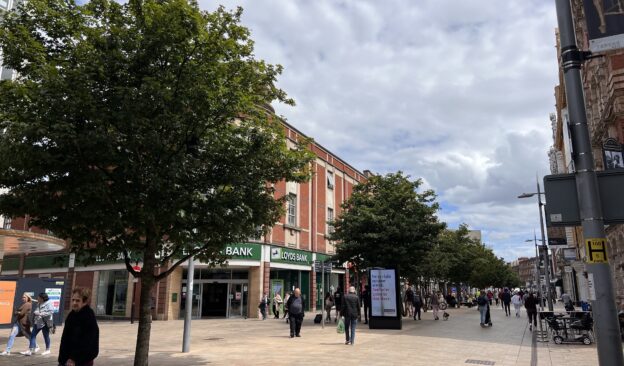
Streetscape improvement project in Hull embraces Silva Cells throughout the town, providing soil volume to new hardscape trees.
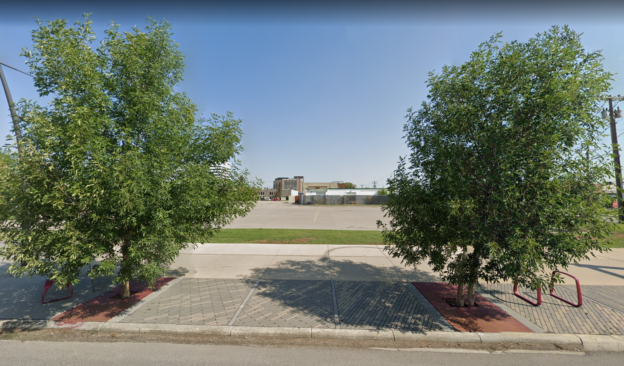
Trees planted in Silva Cells along the upgraded 61st Avenue Greenway in Calgary are displaying remarkable growth compared to their nearby tree-pit counterparts. The Silva Cell system is also performing stormwater treatment on the north side of the street, reducing peak-flow concerns and cleaning the runoff.

The iconic Battersea Power Station in London, after sitting idle for nearly four decades, was reopened as a new mixed-use development, complete with a “halo” of trees around its facility planted in the DeepRoot Silva Cell system for its uncompacted soil volume benefits

East Midtown Greenway in Manhattan is a waterfront boardwalk utilizing Silva Cells in support of more than 50 trees and to perform LID stormwater treatment before runoff enters the East River
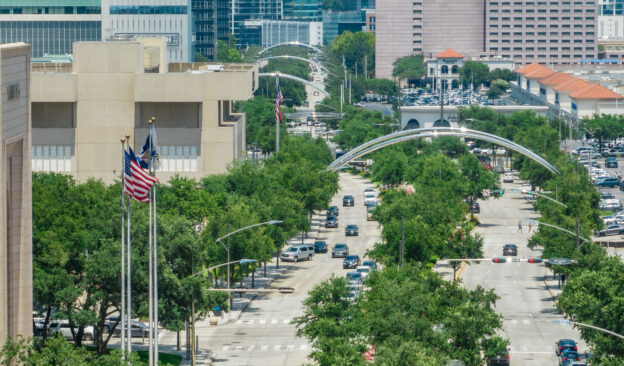
Almost a thousand custom-grown Live Oak trees line the Post Oak Blvd roadway from IH-610 to Richmond Avenue — hundreds of them planted along the new sidewalks in Silva Cells, which in many places serve as a bridge to adjacent green space and thus additional uncompacted soil volume for continued tree growth.
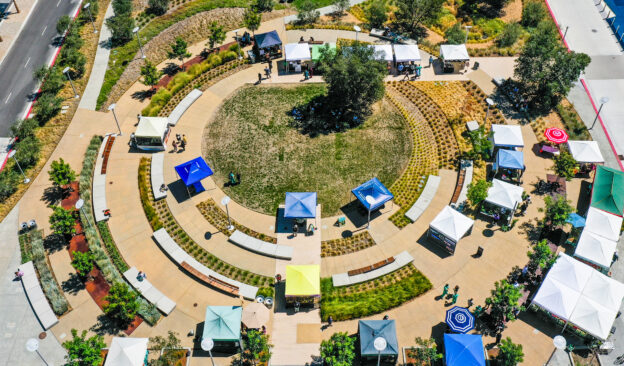
The Renova Park design team prioritized green space, planting dozens of trees — including many in or around the park’s circular pathways, each one accessing 750 cubic feet of soil volume thanks to the hardscape-supporting Silva Cell system.
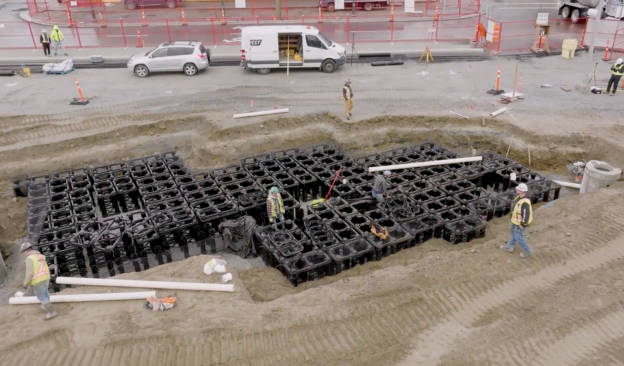
Without room for “daylighted” raingardens, project planners at the Phibbs Exchange bus terminal turned to Silva Cells for their underground bioretention needs — a system that treats stormwater on location without sacrificing buildable real estate.

Multi-phase and award-winning streetscape renovations in Selkirk, Manitoba, utilize Silva Cells for soil volume and stormwater treatment

River Oaks, a new high-end development district in Houston, tasked Silva Cells with providing lightly compacted soil to trees around a residential swimming pool and along an outdoor dining terrace.

New development area of Earls Court in London known as Lillie Square installed Silva Cells for soil volume and on-site stormwater treatment above the area’s new permeable pavement

Industrial redevelopment in Cambridge, Ontario, blends old with new and includes a green space corridor supported by Silva Cells

Multi-phase, award-winning project to revitalize downtown core of Rochester, Minnesota, outside the world-renowned Mayo Clinic embraces Silva Cell technology: over a hundred trees are thriving, the public realm space is rejuvenated, and stormwater is being utilized for supplemental tree irrigation

The Brentwood Mall just outside Vancouver underwent a transformation beginning in 2014, evolving from a traditional shopping mall to a multi-use development complete with a robust urban forest of more than 150 trees planted in Silva Cells

The new above-structure plaza at the Downtown BART station in Berkeley, California, planted 8 trees in Silva Cells — creating an inviting green ambiance in the new mixed-use space
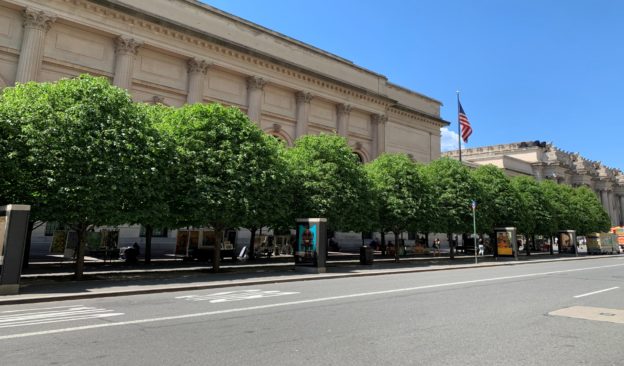
New York City Landmark shows exponential growth of 92 trees since the 2013 Siva Cell installation.
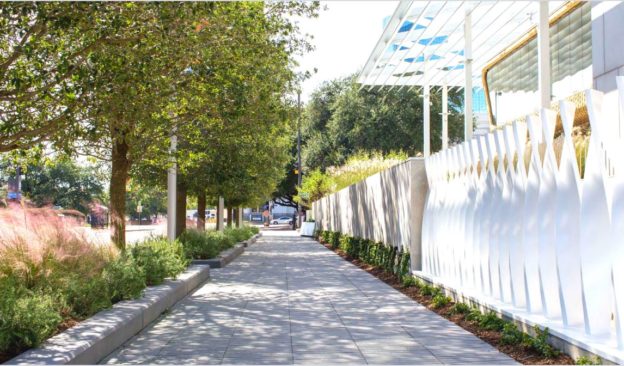
Trees Planted With and Without Silva Cell in the same project highlights Silva Cell trees as bigger and fuller.
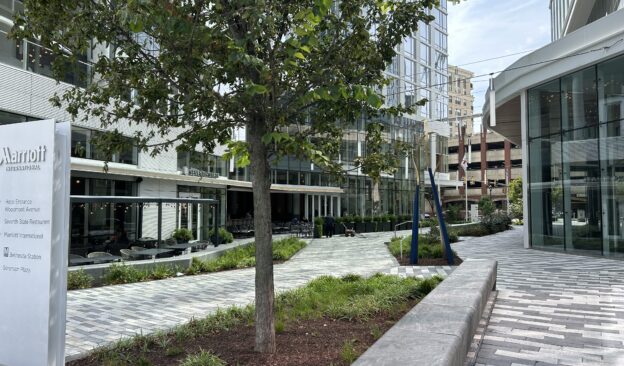
The new construction project, Marriot International Headquarters and Hotel in Bethesda, Maryland hosts a slew of green infrastructure achievements. The 2.14-acre project site will manage stormwater, accommodate on-site green roof over a parking lot, and create a lush green space for pedestrians, with the support of DeepRoot Silva Cells.
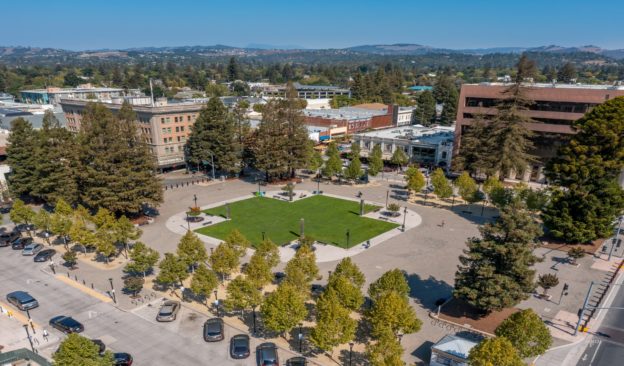
The Santa Rosa Courthouse reunification is a long-awaited project that helped restore the city’s downtown square. The outdoor plaza serves as a destination for public events with 87 trees providing shade and green infrastructure.
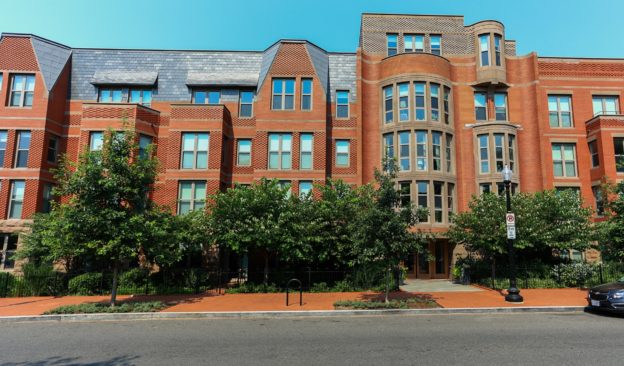
17 trees that surround 128 luxury residence buildings covering the entire block at 777 C Street St Pennsylvania Ave. SE help to achieve principles of new urbanism, support neighborhood activity, and well-being, and harvest site stormwater in the historically significant neighborhood.
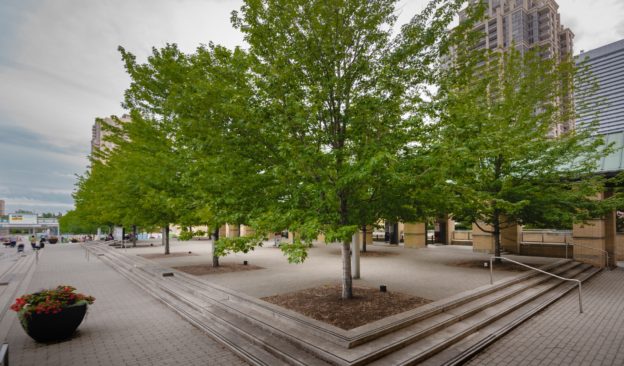
Silva Cells were able to reduce from what is normally required to meet H-20 standards, using a thinner pavement. 30 Autumn Blaze maples were planted at Mississauga Civic Centre 10 Years Ago, and today they are thriving.
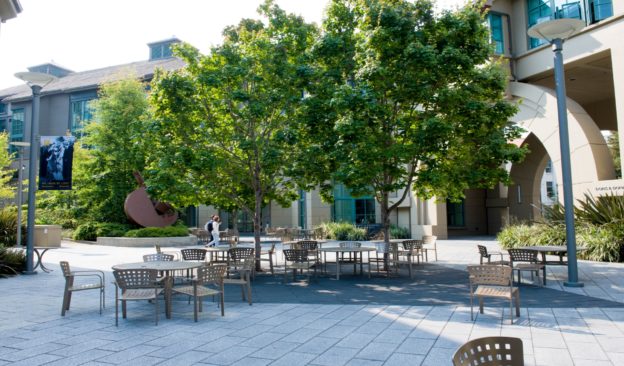
After 10 years, the work of GLS Landscape Architecture combined with 500ft3 of soil volume provided by DeepRoot’s Silva Cell, the trees and students are thriving.
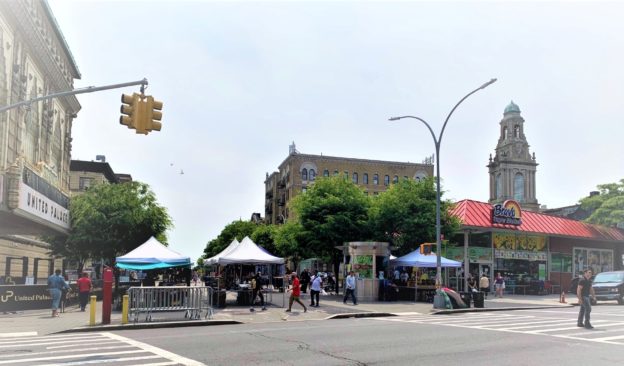
A permanent public space reclaimed for the community of Washington Heights elevates large city space transformation via incorporating green infrastructure.
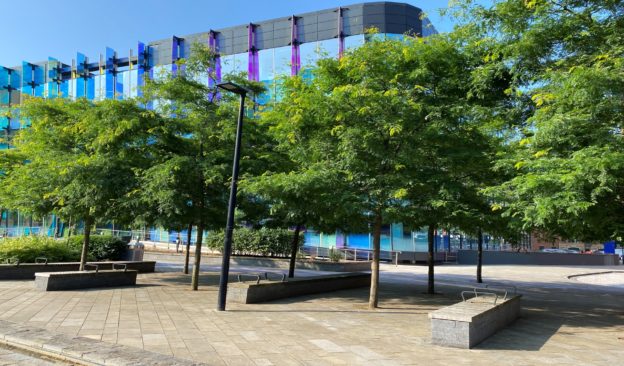
Sovereign Square is a gateway into a future City Park that will help transform Leeds into a healthier more attractive and ecologically diverse place.
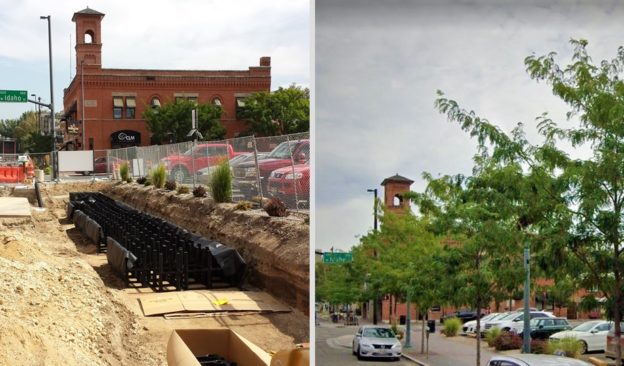
Since 2009, the City of Boise has implemented 28 Silva Cell projects to revitalize historic downtown in a healthy and sustainable way.
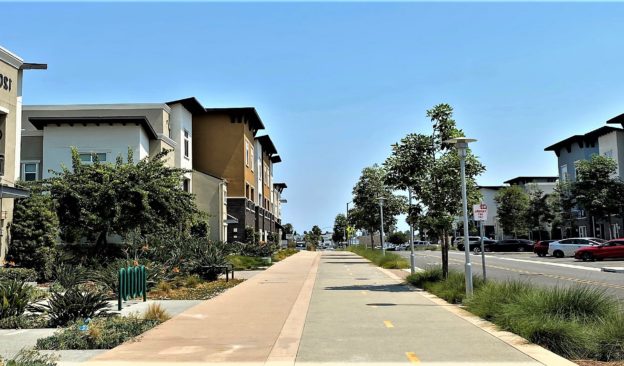
Integrated trees and stormwater project breathes new life into formerly industrial stretch in San Marcos
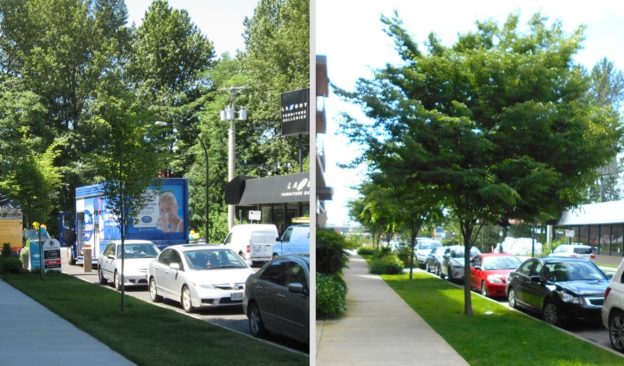
Below ground, the “swale” portion of the design removes pollutants and improves water quality, making it safe for the excess water to drain into the Mosquito Creek habitat and watershed.
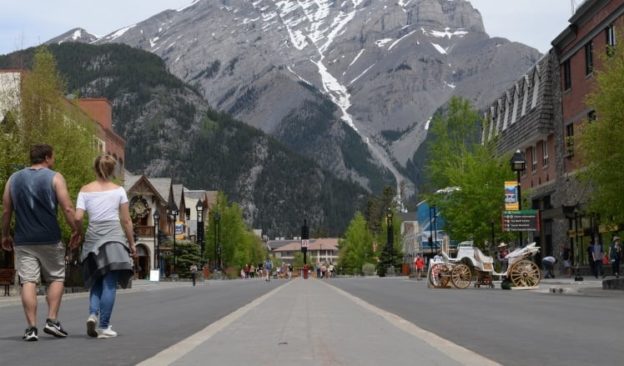
In 2021, a near 30-year-old vision to create a cohesive, connected, and safe thoroughfare came true for both Bear and Moose streets in Banff, Alberta.
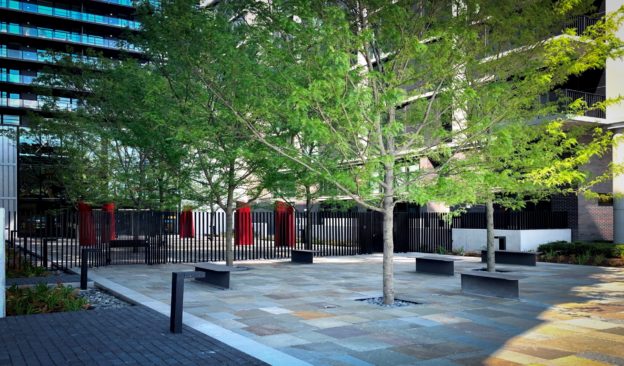
Eight trees each have 800 ft3 of soil and manage 1,600 gallons of stormwater at The Guild Lofts with 282 2X Silva Cells.
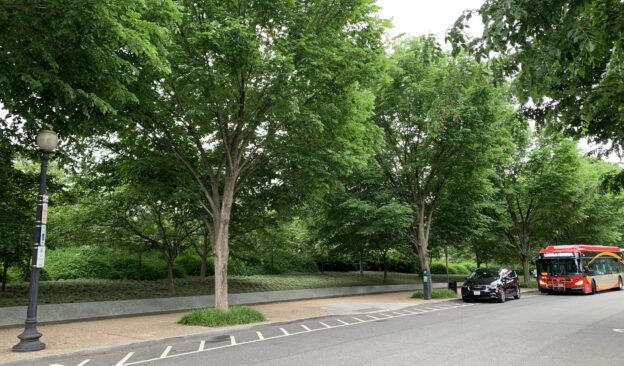
Authorized by Congress in 1996, the Martin Luther King, Jr. National Memorial in Washington, DC is a groundbreaking project.
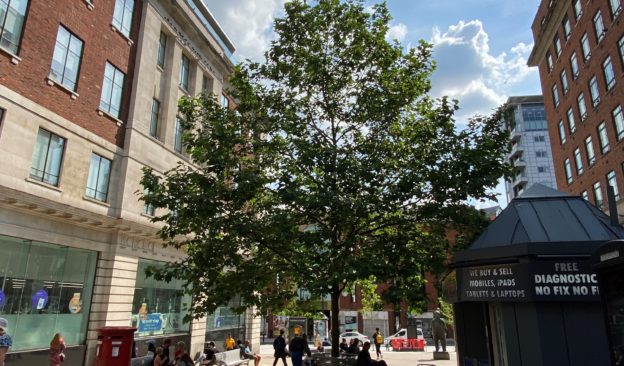
Dortmund Square in Leeds City Centre has undergone a makeover adding 30 m3 of soil that will add longevity to the London Plane.
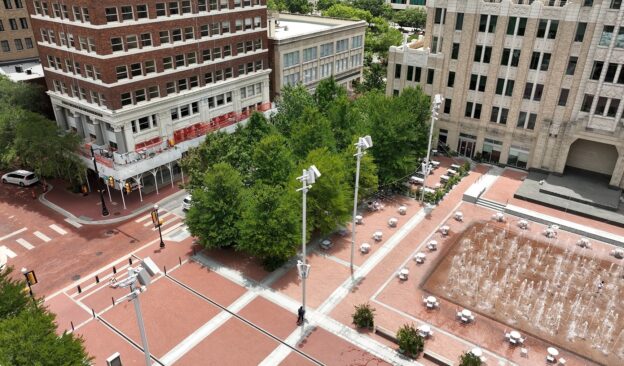
Downtown Fort Worth, Texas was a popular hangout for outlaws, cattleman, gamblers, cowboys, and many legendary names from the glory days of the Old West.
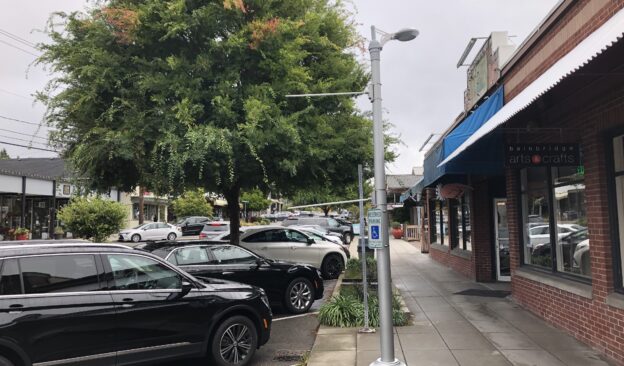
Bainbridge Island is a small city located a 35-minute ferry ride from downtown Seattle in the heart of the Puget Sound.
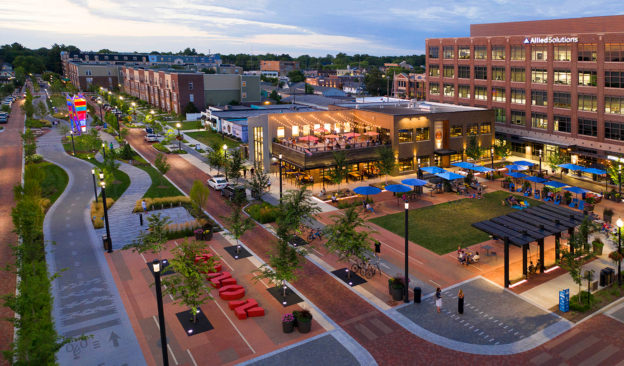
A .5 mile stretch of the famous Monon Greenway running through Carmel, Indiana received an urban makeover in 2017. At the foundation of the reconstruction: 2,000 Silva Cells.
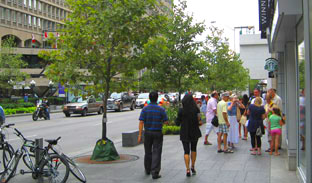
Toronto has one of the most ambitious urban forestry plans in North America. They have set a goal of increasing their overall tree canopy from 17 percent to 40 percent.
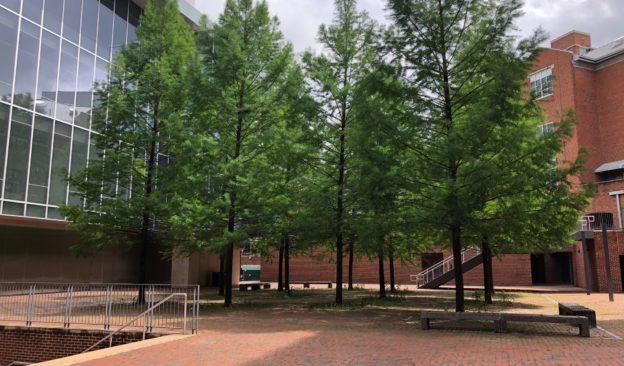
The trees and stone seats are 750 2x Silva Cells that have ample soil volume, exactly 700 ft3 each. The designers wanted the young, new trees to grow to similar sizes over the decades, therefore consistent amounts of shared soil volumes were implemented.
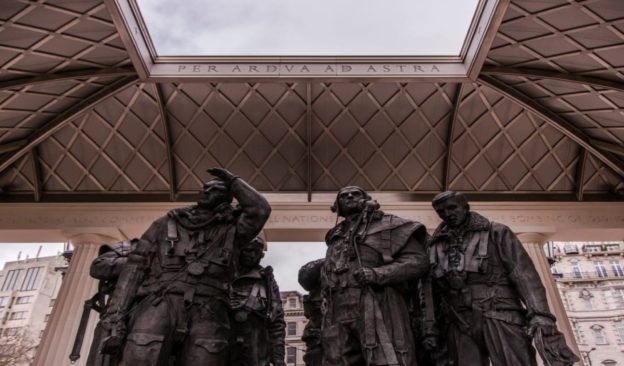
The RAF Bomber Command Memorial in London’s Green Park is complemented by London Planes.
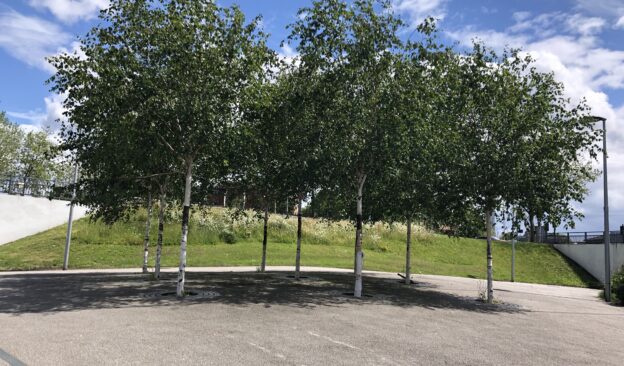
An oasis of nine trees thrives below a bustling roundabout in Salford, U.K. Part of the Gateway Quays project, the Himalayan Birch (Betula Utilis Jacquemontii) trees are supported by 184 Silva Cells, providing over 47m3 of shared rooting volume.
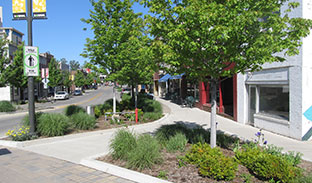
Landscaping codes that emphasize tree growth, shade, and the minimization of heat-island effect are increasingly taking hold around the twin cities region of Bloomington and Normal, Illinois.
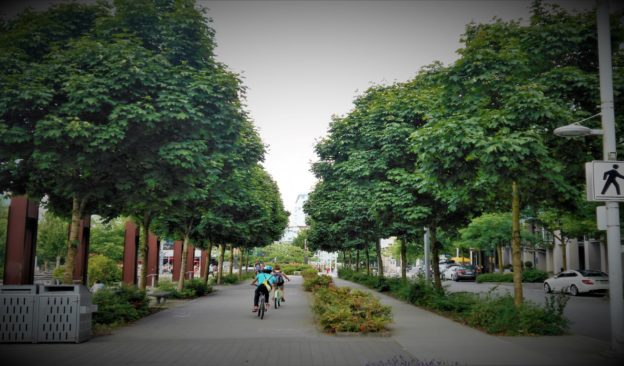
South East False Creek, in Vancouver, Canada has 80 trees that are thriving with over 7,000 Silva Cell units below ground.
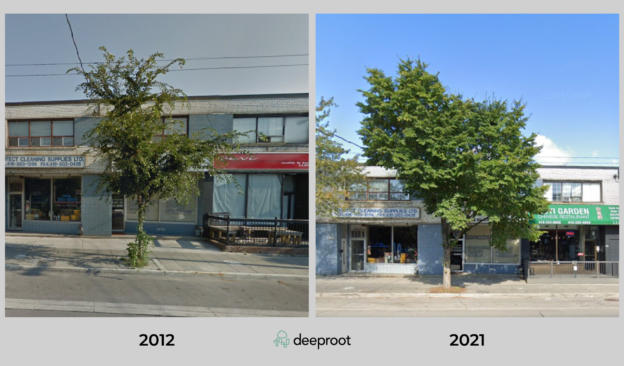
In 2008 a Sustainable Sidewalk Pilot Project was built on The Queensway using DeepRoot Silva Cells to create two underground bioretention areas supporting four trees. A decade later the results are stunning.
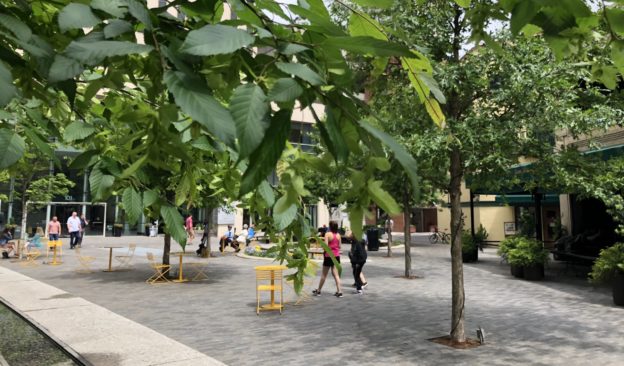
One of DeepRoot’s earliest Silva Cell projects involved Jim Urban, FASLA, and Drew Smith of Greenville, South Carolina.
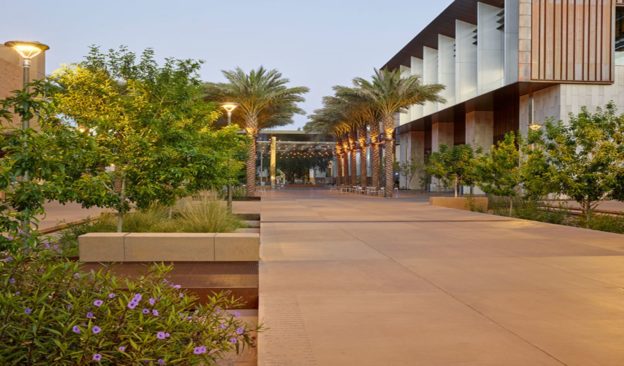
Silva Cells supporting more than 30 trees on the ASU campus, and thousands of cubic feet of soil volume is an exciting step for ASU’s landscape architecture.
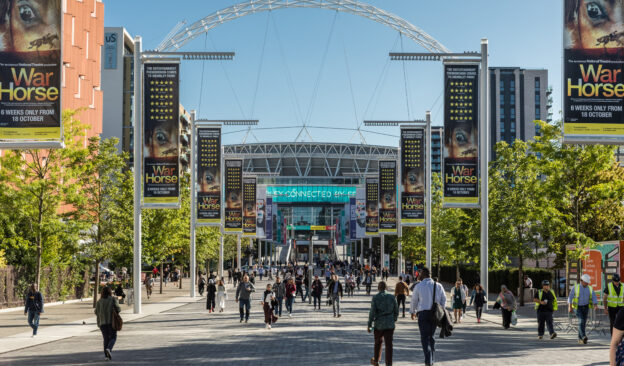
Silva Cell was the No. 1 choice to promote healthy tree growth and provide a safe pedestrian walkway and increase accessibility for all patrons.
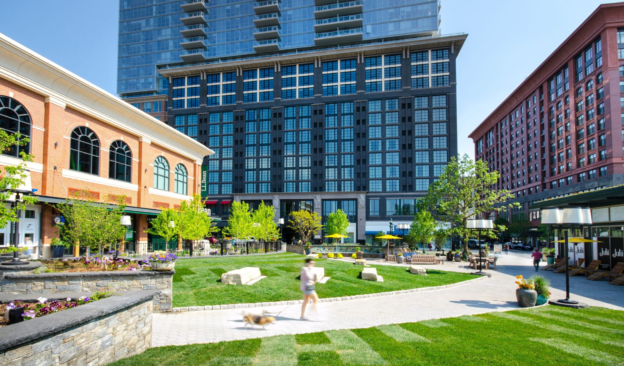
1,300 Silva Cells help make tree health and urban forestry health central to a new sustainable development in North Bethesda, Maryland.
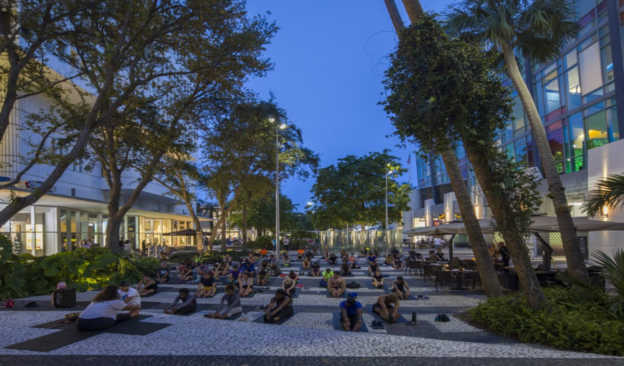
Large, native, live oak, kapok, and bald cypress rise majestically above the famous pedestrian mall, their shady native ecosystems offering an urban respite from the hot sun. The project won multiple awards in the years after its completion.
